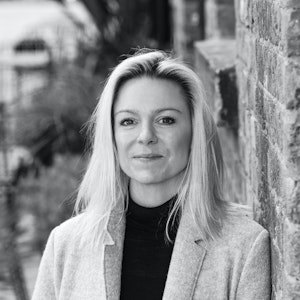Aligning our self
We’re not just one thing. The multiple nature of humans.
Author
Philippa Richardson
Pip is Founder of The Circle Line, a Transactional Analysis psychotherapist, a former City litigator and a Head of Marketing in the property industry. She works with individuals, leaders and groups to help them function well in life and work, believing that we can all write our own life story.

Throughout history, and from many standpoints – philosophy, culture, religion – people have found that humans have a multiple nature. We’re not just one thing. We have different sides or “parts” to our personality.
We see this when we feel torn, stuck or indecisive. When we act in a way that is surprising or out of character. When we hide parts of ourselves and from how we are when no one is looking.
We often talk about taking charge: of teams, projects, of our life. And we talk about the stars aligning, which waits for chance. Yet we are ultimately stardust; our task is to align our self.
What then are the “parts“ of us that need aligning? They can be thought of as falling into three categories: Parent, Adult and Child. This well-established model of the human psyche (Berne, 1969) acknowledges our multiple parts and helps explain where they came from, how they were formed, and how they impact us now. By identifying which one is manifesting itself in any given moment, we can take more control over our thoughts and behaviours - and ultimately our life.
The Parent
This part of us is made up of the thoughts, feelings and behaviours that we copied from our parents or carers.
When we're in our Parent mindset we think, feel and behave as our actual parents or caregivers did in the past.
“Children have never been very good at listening to their elders, but they have never failed to imitate them. They must. For they have no other models.”
In this state it is as if someone presses “play” on a recording in our mind and we repeat what we saw and heard without question. This can include our parents’ values and mantras (and those of our teachers and extended family) – “Big boys don’t cry” or “Smile and the world smiles with you!” - as well as emotions and nonverbal modelling, like never seeing your parent cry or shout.
The Adult
The Adult state consciously responds to the here-and-now reality. It's the only state not based in the past. When we're in Adult mode we are aware of our thoughts, feelings and behaviours, and why they are happening.
If I ask you how to get to the North Pole you'd probably figure it out from your Adult state. If someone dies and you cry, you're responding in an appropriate way from your Adult state.
The Child
In our Child state we repeat our thoughts, feelings and behaviours of our childhood.
From the wonder of Santa Claus to the primal (and survival-serving) fear we had of being rejected or abandoned by our parents, the world was unknown and often overwhelming. We were utterly dependant on our parents. In this vulnerable state our emotions and experiences imprinted strongly. We carry them with us throughout our adult life and may often ping back into those thoughts, feelings and behaviours.
We see how two of the three states are rooted in the past. This can protect us, but can also spell trouble. So it’s helpful to understand our multi-dimensional nature. Through education and therapy, we can learn to embrace and challenge our Child and Parent patterns in order to live in the now, in Adult, bringing that powerful Child part in line. In this way we continually align ourselves, and just maybe the stars will too.